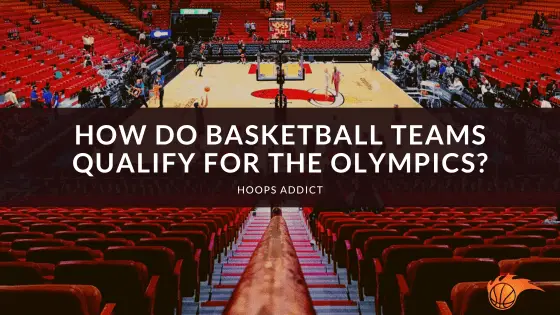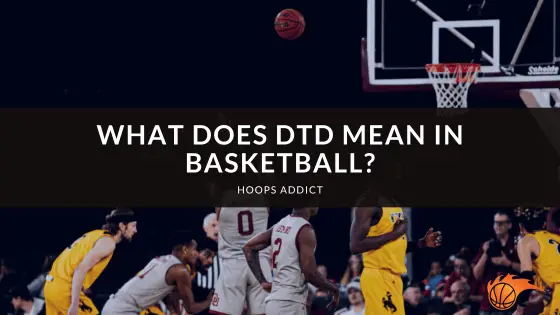Would you like to know how do free throws work in basketball? Well, look no further. We’ve got you covered. Free throws stop the clock and allow you to score outside the shot clock. Free throw attempts can be a result of technical or personal fouls. Continue reading to understand what free throws are, what types of in-game incidents result in free throws, what players and officials do when a free throw is awarded, and much more.
 What Is a Free Throw in Basketball?
What Is a Free Throw in Basketball?
Let’s start with the basics. Free throws are the shots in basketball that always earn one point. They hold tremendous importance in the game, often becoming the deciding factor between victory and defeat for a team. These shots are taken from a specific line on the court called the free throw line, which is situated 15 feet away from each basket.
Typically, free throws are given to a player who has been fouled while attempting a shot. However, it’s not limited to just that scenario. There are various other situations where free throws can be awarded to a player or even an entire team. When free throws are granted to a specific player, it is usually the one who was fouled during the play. There are instances where the team gets to choose which player takes the shot, regardless of who was fouled, as in the case of technical fouls.
The amount of free throws awarded to a team or player depends on various factors. These factors include:
- The type of shot that was being taken when the foul was committed. If a player was attempting a two-point shot when fouled, they will be awarded two free throw attempts at the free throw line if the shot was missed. They will be awarded one free throw if they scored the shot while getting fouled. If a player was attempting a three-point shot when they were fouled, they will be awarded three free throw attempts if the shot was missed and one free throw if they made the initial shot.
- The type of offense the referee blew for will also determine how many free throws are taken. Defensive three seconds violation results in one free throw and clear-path fouls result in 2 free throws. Unsportsmanlike fouls result in two free throws and technical fouls such as excessive timeouts and delay of the game result in one free throw. Bonus team fouls result in two free throws.
After shooting foul shots are awarded to a player, the following happens:
- The player proceeds to the free throw line to take the free throws.
- The player taking the free throw always has a maximum of 10 seconds to shoot the shot after receiving the ball from the referee. If the time elapses and no shot is taken, the player loses the opportunity.
- Depending on the league, the defensive team is allowed three or four players on the side of the key to attempt to catch the rebound if the last free throw is missed. The offensive team is allowed to place two players on the side of the key for the same purpose.
When technical fouls are awarded to a team, the following happens:
- Each player is required to stand behind the free throw line extended.
- The player shooting the ball stands at the free-throw line. This is different from when regular shooting fouls are called. Since the ball is awarded to the team shooting the free throw after the technical, there is no need for players to stand in the rebounding blocks to jostle for possession.
In all cases, a player must stand behind the free-throw line with both feet on the ground when taking a free throw. The player taking the free throw is not allowed to move until the ball hits the rim or the backboard. Players on the side of the key are not allowed to move for a rebound until the shot is released.
Free throws are not always the easiest shots to make, even though they can be seen as one of the most important shots in the game. The importance of free throws in basketball can’t be overlooked. Free throws can help a team win a game in many ways.
- For starters, A made free throw is one point toward the team’s score.
- Additionally, free throws can help set the pace of a game. Free throws can slow down the game and allow your team to set up its defense.
- Free throws can also be used to slow down your opponent’s momentum and work against them if they have poor free-throw shooters.
- It is a common strategy for coaches to instruct their players to intentionally foul opponents that cannot shoot free throws well. This sends them to the free-throw line, where they will likely miss, and the defensive team will have a chance to regain possession of the ball. This strategy is commonly referred to as the “hack a Shaq.”
 What Fouls Result in Free Throws?
What Fouls Result in Free Throws?
There are many different types of fouls that can be awarded in the game of basketball. Not all violations result in free throws, but many of them do. Violations that result in free throws to the opposing team include:
- Shooting fouls
- Bonus team fouls
- Technical fouls
Technical fouls are a huge category of fouls. Let’s take a look at some of the actions of players and coaching staff that could result in the referee blowing the whistle for a technical foul.
- Excessive timeouts
- Unsportsmanlike fouls
- Clear path fouls
- Defensive three-second violations
- Hanging on the basket excessively
- Coaches box violations
- Incorrect number of players on the court
- Using a player not on the team list
- Destroying the rim or backboard
- Unnatural physical acts towards opponents
- Delay-of-Game
- Conduct detrimental to the game
- Disrespectfully addressing an official
- Physically contacting an official
- Actions indicating resentment to a call or no-call
- Use of profanity
- Taunting
 How are Free Throws Awarded in Basketball?
How are Free Throws Awarded in Basketball?
Referees play a very important part in the free-throw process. The referee is responsible for letting the players, coaches, and table officials know exactly what’s happening throughout the entire free throw process.
- To begin, the referee that blew the whistle for the free throw is responsible for indicating the type of foul that was assessed. If it’s a technical foul, the referees are responsible for indicating to the players, coaches, and table officials that a technical was called against the team or player. If it’s a shooting foul, this is also the referee’s responsibility.
- To commence the free throw process, the referee takes the ball to the out-of-bounds line below the basket, where the free throw will be taken.
- The referee then passes the ball to the player taking the free throw and indicates the number of free throw attempts to be taken. If it’s one shot, the referee indicates by holding one finger above his head that one shot is to be attempted. If a player is fouled while attempting a three-point shot and the shot misses, the referee will indicate by raising three fingers above his head that three shots are to be taken. If two shots are to be attempted, the referee indicates two shots and passes the ball to the player.
- After each free throw attempt, the referee gathers the ball and indicates the number of shots remaining. For the last shot, the ball will be live if the shot is missed, so the referee will not attempt to gather the ball.
The second referee usually stands at the free-throw line extended outside of the three-point line. This referee is responsible for monitoring the player’s movements and position to see if any lane violation occurs. If a third referee is present, that referee is usually at the score table or at the other end of the court.
Suppose the referee notices any movement that qualifies as a lane violation. In that case, they will blow their whistle and indicate either an extra free throw attempt for defensive lane violations or a turnover for offensive lane violations.
 What Does Basketball Free Throw Percentage Mean?
What Does Basketball Free Throw Percentage Mean?
Free throw percentage is a percentage statistic calculated by dividing the amount of made free throws of a team or player by the number of shots taken. A player may end a game with many made free throws, but it’s not good if they shoot a poor percentage.
For example, Giannis Antetokounmpo made ten free throws against the Miami Heat in game 5 of the 2023 playoffs, but he took 23 free throws. The 13 missed free throws gave him a percentage of 43% from the line in that game. The team lost and was eliminated from the playoffs.
 3 Greatest Free Throw Shooters in NBA
3 Greatest Free Throw Shooters in NBA
Steph Curry and Steve Nash hold the two top positions for career free-throw percentage. Steph is at 90.8%, while Nash is at 90.4%. Mark Price is the third-best free throw shooter in the history of the NBA, with 90.3%. The player with the best free throw percentage season is Josè Calderon. He finished the 2008-09 season with a 98.1% free throw shooting percentage.
Wrapping Things Up: How Do Free Throws Work in Basketball?
Free throws are uncontested shots taken at the free-throw line, 15ft in front of the basket. These shots can help a team win games if they have good free-throw shooters. They help set the pace of the game but could cost teams possessions if they are poor shooters from the line.
We hope you enjoyed this post! If you did, be sure to check out our other basketball FAQ articles here.

 What Is a Free Throw in Basketball?
What Is a Free Throw in Basketball? What Fouls Result in Free Throws?
What Fouls Result in Free Throws? How are Free Throws Awarded in Basketball?
How are Free Throws Awarded in Basketball? What Does Basketball Free Throw Percentage Mean?
What Does Basketball Free Throw Percentage Mean? 3 Greatest Free Throw Shooters in NBA
3 Greatest Free Throw Shooters in NBA

